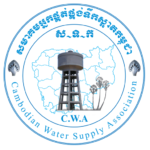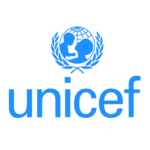

Program and Project
«Climate Resilient Piped Water Supply in Climate Risk Communes in
Kampong Speu and Takeo»

Why This Programme
Cambodia has a tropical monsoon climate and is characterized by wet (May to October) and dry (November to April) seasons. Mean annual temperature has increased by 0.8˚C since 1960 with a rate of around 0.18˚C per decade. In almost every season, the frequency of hot days and hot nights has also increased significantly since 1960. Mean rainfall over Cambodia does not show any consistent increase or decrease since 1960 and the proportion of rainfall that occurs in heavy events has not altered significantly since 1960.
Cambodia experiences almost all types of hydro-meteorological hazards, including floods, drought, heavy storms/ typhoons, and most geographical regions of the country – the Riverine Central Plains, coastal ecosystems and the Dangrek mountain range in the north and Cardamom mountains in the southwest – are exposed to one or more of these hazards.
Increases in mean annual temperature in Cambodia are predicted to be between 1.4 and 4.3°C by 2100. Mean annual rainfall is also predicted to increase, with the most significant increases experienced in the wet season. As with the other countries in the Greater Mekong Sub-region, flooding and droughts are expected to increase in terms of frequency, severity and duration.
While the projected impact of climate change on precipitation have higher levels of uncertainty than projected temperature increases, and the impact of future dam development on hydrological systems is also an area of uncertainty, data exists on the vulnerability of WASH services in Cambodia to seasonal variations: a vulnerability which climate change risks amplifying, presenting further challenges to achieving and sustaining national and global targets of universal access to WASH.
Although Cambodia has made remarkable progress in increasing Cambodian population access to basic water supply over the past decades, gaps remained in access to the services. One in four rural Cambodians use water from non-improved drinking sources.
They experienced a 22 percentage point wet to dry season decrease in those using improved water sources, compared to a 2 percentage point decrease in urban areas during the same period. The poorest rural households experience a 20 percentage point drop in those using improved water sources, compared to a 11 percentage point drop amongst the richest rural households.
The Lack of Access to Safe Drinking Water Also Has Negative Impacts:
-
-
- On education, with children falling sick or suffering from dehydration adversely affecting their cognitive capacities and
- On the environment, as one of the main options available to make water safe to drink is through boiling it, often with inefficient charcoal stoves emitting significant CO2.
-
Research has also indicated that burdens of water-borne diseases – cholera and diarrhea (with diarrhea prevalent in children under-five and an important factor in malnutrition) – may increase if climate changed induced water-scarcity is exacerbated and extreme weather events threaten safe water and sanitation services. Furthermore, rising temperatures may increase the risk of diarrheal disease.
In Cambodia, piped water supply system is the most sustainable option. It was observed that more and more private operators invested in the piped water supply systems since the past five years.
The new regulation of the Ministry of Industry, Science, Techology and Innovation (MISTI) required private service providers to expand piped water connection throughout the service areas within five years under the issuance of the 20-year lifespan license. However, the piped water supply system networks are not covered to make those people to have access to the service they supposed to receive.
Therefore, CWA Proposed This Partnership Project With UNICEF to Address The Aforementioned Issues By:
-
-
-
- (i) Expanding piped water supply system networks and improve water sources to ensure water source availability during dry spell period and
- (ii) Providing supports for the establishment of village level water supply systems in Oudongk district, Kampong Speu province and Borei Cholsar district, Takeo province, in the communes where the indicating relatively low projected rainfall, which when combined with a relatively long projected dry spell is assumed to indicate the risk of relatively high water scarcity.
-
-
The proposed interventions were also defined as climate adaptive measures based on the technical solutions defined under climate risk identification for commune water safety plan in the target areas that were already conducted by MRD/PDRD and commune authorities with the technical supervision from UNICEF in 9 communes in the two selected districts, and some communes are cluster communes piped water systems.
Programme Document Expected Results:
Programme Document Output 1: Private water operators have improved the water supply system through pipe network expansion and water source improvement in the targeted communes to cope with climate risks in respond to risks identified in water safety plan process.
Programme Document Output 2: At least 500 households living in target communes benefited from the climate resilient village level piped water supply in respond to risks identified in water safety plan process by end of 2022.
Performance Indicator 1:
-
-
- Number of piped water networks installed (totally 37,500 meters) delivering safe water to people in target communes.
- Number of HHs supplied with safe water from network.
- Number of piped water supply system improved it water source
- Number of existing households benefited from the water source improvement to cope with climate risk
- Number of on-site coaching conducted to improve the operation and maintenance as well as water supply quality
-
Performance Indicator 2:
-
-
- Number of technical assessment on the possibility in establishment of village level piped water supply systems
- Number of village level piped water supply systems installed
- Number of households include women and children accessed to village level piped water supply
- Number of water safety plan developed by aligning with MISTI’s Water Safety Plan Guideline.
-
